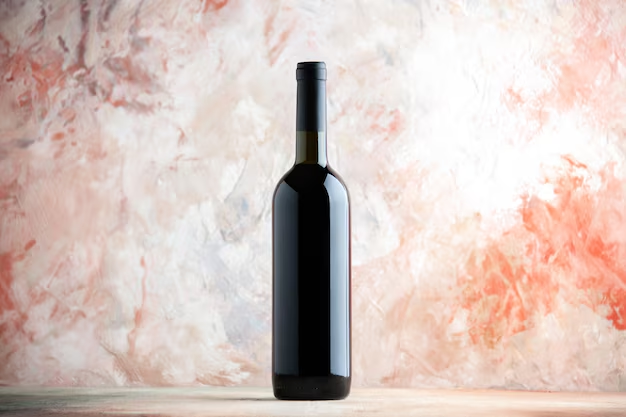Should You Store Red Wine in the Refrigerator? Uncorking the Truth
Keeping your wine at its best can sometimes feel like an art form, and many wine enthusiasts face a common conundrum: can red wine be stored in the refrigerator? While red wine is often associated with room-temperature storage, there are compelling reasons to explore different options. Whether you’re a casual wine drinker or a budding connoisseur, understanding the proper storage techniques can enhance your wine enjoyment and preserve its quality over time.
Understanding Wine Storage: The Basics
Before delving into whether your favorite red should mingle with the milk and eggs, it’s important to understand the fundamentals of wine storage. Proper storage extends the life of wine and protects it from spoilage and flavor degradation.
Key Factors in Wine Storage
Temperature: Consistency is crucial. Wine should be stored at a stable temperature, ideally between 45°F and 65°F. For red wines, slightly warmer, around 55°F to 65°F, is often desirable.
Humidity: Maintaining a humidity level between 50% and 80% keeps corks moist, which is essential for preserving wine.
Light: UV rays can degrade wine, affecting both color and taste. Dark storage areas are best.
Vibration: Constant movement can disturb sediments and alter the wine’s natural aging process. A still environment is ideal.
Can You Refrigerate Red Wine? Debunking Myths
Refrigeration: A Preservation Tool?
Refrigerating red wine often raises eyebrows. This skepticism stems from the belief that chilling reds kills their complex flavors and aromas. However, there are scenarios where refrigeration might actually be beneficial.
Short-Term Benefits
Preservation After Opening: Once opened, wine oxidizes and degrades faster. Refrigeration slows this process, extending the life of your unfinished bottle by a few more days.
Cooling Tint: For certain red wines, especially lighter ones like Pinot Noir, a slight chill can enhance refreshing qualities, suitable for summer sipping.
The Downside
While there are short-term benefits to refrigeration, long-term storage can be detrimental. Wine stored in a typical kitchen fridge for extended periods is subject to temperature fluctuations, low humidity, and strong odors.
Alternatives to Refrigeration
If the fridge isn’t the best option, what alternatives ensure your wine remains drinkable and flavorful?
Wine Coolers and Cabinets
Investing in a wine cooler or cabinet can be a wise choice for serious wine lovers. These devices offer:
- Temperature Control: Adjustable settings accommodate both red and white wines.
- Stable Environment: Protection from temperature fluctuations found in regular refrigerators.
- Capacity: Various sizes fit different needs, from compact to expansive collections.
Cellar Storage
For those with an extensive wine collection, a dedicated wine cellar offers:
- Long-Term Aging: Ideal for wines intended to improve over years.
- Optimal Conditions: Consistent temperature and humidity levels mirror professional storage facilities.
Practical Tips for Storing Red Wine
To make the most out of your wine collection, here are some handy tips that balance convenience with proper storage:
Short-Term Refrigeration: If you must refrigerate, return the wine to room temperature before serving to revive its character.
Horizontal Storage: Store bottles on their side to keep corks moist and airtight.
Dark Corners: If a wine fridge or cellar isn’t an option, a dark closet or cupboard can serve as a storage spot.
Consistent Temperature: Avoid storing wine in areas with temperature swings, such as near ovens or windowsills.
Finish Quickly: Consume opened bottles within three to five days and use a vacuum pump to remove air, extending the wine’s lifespan.
Understanding Wine's Shelf Life
A significant aspect of wine storage is understanding its shelf life and how it affects consumption decisions.
Opened vs. Unopened Wine
- Unopened Wine: With proper storage, most red wines can last several years, with some able to age for decades.
- Opened Wine: Oxidation starts to deteriorate the wine right after opening.
Factors Influencing Longevity
The grape variety, production method, and type of closure (cork vs. screw cap) play roles in how long a wine remains drinkable.
Embracing Moderation: Balancing Taste and Temperature
While refrigeration might not be a one-size-fits-all solution, there’s room for flexibility depending on personal preference, wine type, and context. Experimenting within these guidelines can help find the sweet spot between preserving aromas and enhancing flavors.
When to Serve Cold
Light Reds with Chill: Lighter reds, like Beaujolais or Bardolino, benefit from a brief chill, fully refreshing when served slightly cooler than room temperature.
Room Temperature: Heavier, full-bodied reds, such as Cabernet Sauvignon or Syrah, shine at room temperatures, usually served between 60°F and 65°F.
Ensuring the Wine's Fate Isn’t on Ice
Ultimately, whether to refrigerate red wine boils down to the balance between short-term necessity and long-term impact on flavor and quality. Choosing the right storage option reflects your drinking habits, preferences, and commitment to wine's artful enjoyment.
Summary: Key Takeaways for Storing Red Wine 🍷
🚫 Long-Term Fridge Storage: Avoid the fridge for long-term wine storage; consider wine coolers or cellars.
🍷 Short-Term Chill: Refrigeration can extend the life of an opened bottle; still, aim to consume within days.
🔄 Temperature Matters: Serve lighter reds with a slight chill; heavier reds at room temperature.
🗝️ Moisture & Light: Shield wine from sunlight and keep humidity consistent to preserve cork integrity.
By keeping these insights in mind, you'll not only extend the life of your reds but also enhance your appreciation of each bottle’s unique story. Whether in a cooler, a cellar, or occasionally the fridge, your wine can find its home and stay as delightful as the day it was corked. Cheers to that!
